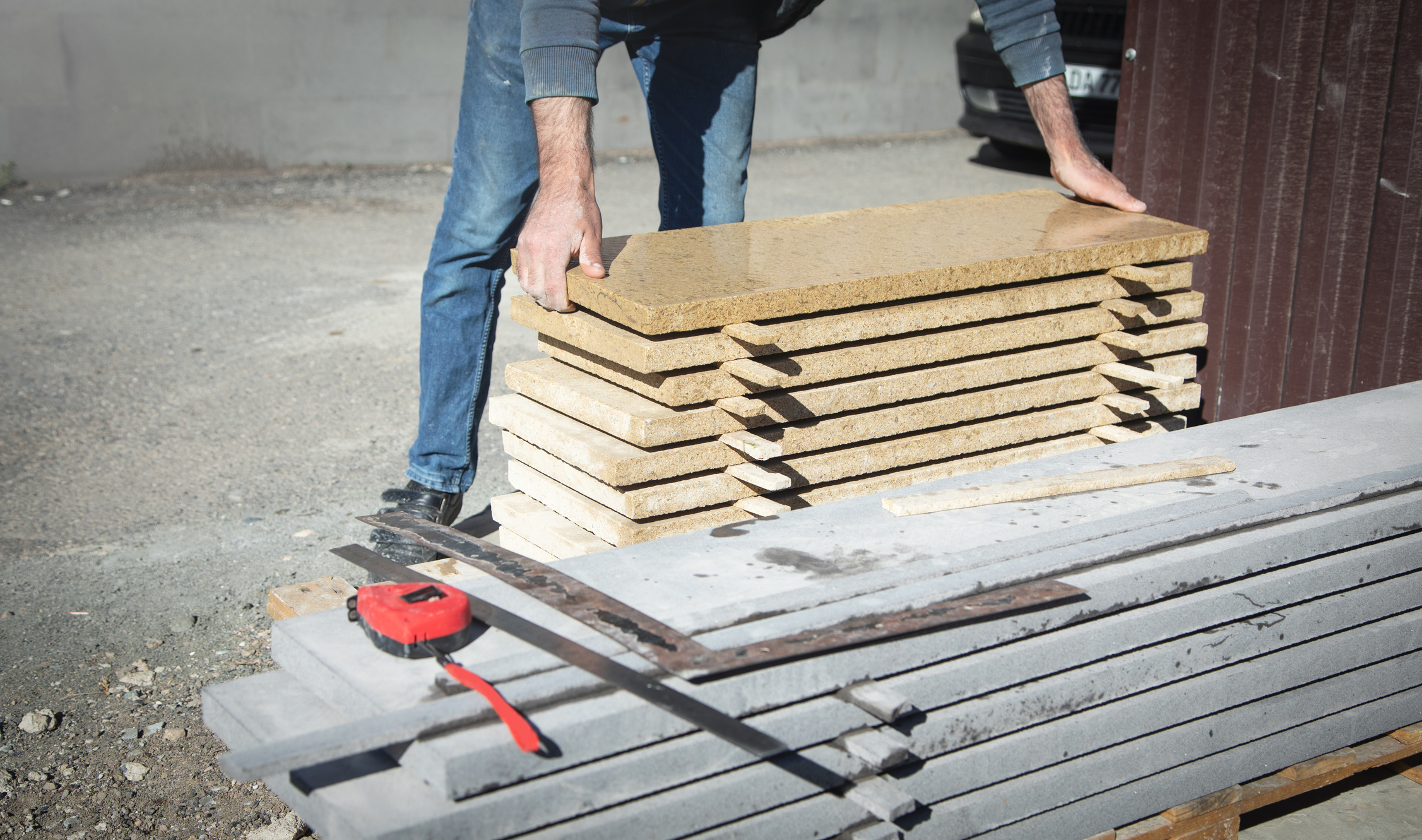Prohibition on the use of Engineered Stone
Published on Posted onPlease note that this post was written for Victorian audiences and the information within may not apply to other regions.
Safe Work Australia has recently published “the Decision Regulation Impact Statement: Prohibition on the use of engineered stone”. A report in which recommends a prohibition on the use of all engineered stone to protect the health and safety of workers. This report was preceded by an announcement of the Australian Council of Trade Unions that they will ban the use of Engineered Stone on Union worksites with or without federal assistance by July 2024.
As Safe Work Australia states “Engineered Stone workers exposed to respirable crystalline silica are significantly over-represented in silicosis cases and they are being diagnosed with silicosis at a much younger age than workers from other industries”. This action toward an Engineered Stone Ban comes as many Australians are developing silicosis as a result of working with these materials, being cited by many as a health epidemic.
What is Silicosis?
Silicosis is a permanent and progressive – lung disease which is caused by inhaling respirable crystalline silica dust, usually over a period of many years. Workers in industries that use certain materials can inhale dust that contains crystalline silica. Respirable Crystalline Silica is a natural mineral found in the following materials:
- Sand
- Stone
- Mortar
- Clay
- Marble
- Concrete
- Slate
- Granite
When these materials are worked on (i.e. via sawing, polishing, drilling, cutting etc) silica is released as a fine dust into the air.
Inhaling these particles can scar the lungs and lead to problems such as:
- Silicosis
- Progressive Massive Fibrosis (PMF)
- Chronic Obstructive Pulmonary Disease (COPD)
- Lung Cancer
- kidney disease
- Autoimmune conditions
Some symptoms of Silicosis include:
- Shortness of breath
- Chest Pain
- Persistent Cough
- Fatigue
- Leg Swelling
- Bluish Discoloration of the lips
Silicosis in Australia
We note that those suffering from Silicosis may also be asymptomatic, at least during the earlier stages, and therefore urge those who may be at risk of developing Silicosis to undergo health monitoring.
The first Australian case of Silicosis was reported in 2015 and have risen substantially since that time. The Cancer Council estimates that approximately 6000,000 Australians are exposed to silica dust at work each year. However, silicosis is often not diagnosed until it is in its advanced stages. Roughly 350 Australians develop silicosis a year, with 230 annually estimated to be diagnosed with lung cancer caused by being exposed to silica dust in the workplace. A Monash University study recently published in June 2023 found that 28 per cent of Victorian stone bench-top workers had silicosis.
While cases of Silicosis have been found in a range of industries; a disproportionate number of diagnoses are in engineered stone workers. Engineered stone has become the dominant bench-top material in Australia, commanding an estimated 55% market share, due to its durability, price, and ease of processing. Those who work with Engineered Stone have a shorter duration of exposure to silica, however they also have a faster disease progression and a higher mortality rate compared to occupations that are exposed to silica from natural sources. This is due to Engineered stones often having significantly higher crystalline silica content compared to natural stone.
In comparison to natural stone, engineered stone is processed far more easily, meaning more stone can be processed in one shift (leading to higher exposure to dust) and a less skilled workforce can be used compared to the more brittle natural stone slabs. The nature of the industry also contributes to non-compliance. As it is mostly made up of small businesses with few barriers to entry and are more culturally/linguistically diverse. Meaning there is often less awareness around the risks and unlikely to have a Health and Safety representative or committee. The small size of many of these businesses means they also have less ability to invest in technologies to minimise the risks on exposure to respirable crystalline silica.
The statement made by Safe Work Australia offered 3 options to prohibit Engineered Stone and protect Australian workers from exposure to Respirable Crystalline Silica.
Option 1 – Prohibition on the use of all engineered stone:
This first option prohibits all use of engineered stone, even if little to no silica content is found within. This proposed prohibition would be similar as the one in place for asbestos. Workers will not be allowed to carry out work on engineered stone, which includes the manufacture, supply, fabrication (cutting, shaping, polishing), installation or use. Exemptions would apply to certain work with engineered stone that was in place prior to the ban, such as removal, repair, and minor modifications.
Option 2 – Prohibition on the use of engineered stone containing 40% or more crystalline silica:
This second proposed option would limit the prohibition to engineered stone containing 40% or more crystalline silica, however stones containing less than the 40% would still be subject to additional regulations.
Option 3 – Same as option 2 with accompanying licensing scheme for those working engineered stone containing less than 40% crystalline silica:
Option 3 has the same prohibition on the use of engineered stone containing more than 40% crystalline silica, however it also outlines additional licensing for those working with stone that has less than 40%.
There will be 2 separate licensing frameworks for those working with engineered stone in this option. Which include
- Licenses for work with Engineered Stone that is already in place.
- A license for work with lower silica engineered stone for workers who add/or install new stone products that have crystalline silica content below 40%.
Zaparas Lawyers have seen firsthand the devastating effect Silicosis has had on our clients, workers have the right to feel safe and protected in their workplace. With these statements from both the Australian Council of Trade Unions and Safe Work Australia, we hope a total ban on the manufacture and supply of Engineered Stone is on the horizon. With poor compliance, in adequate implementation of safety measures and the inability to completely safeguard against exposure even with dust control measures and personal protective equipment in place, elimination is in our view the only option to adequately reduce/stop the risk of exposure. We also congratulate and urge more companies in the meantime to follow in the footsteps of Bunnings and IKEA to discontinue the sale of Engineered Stone.
You can find more blogs relating to Occupational Disease below:


